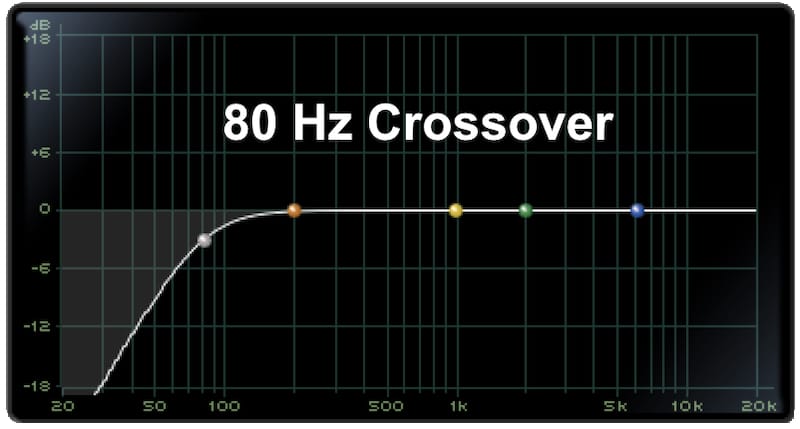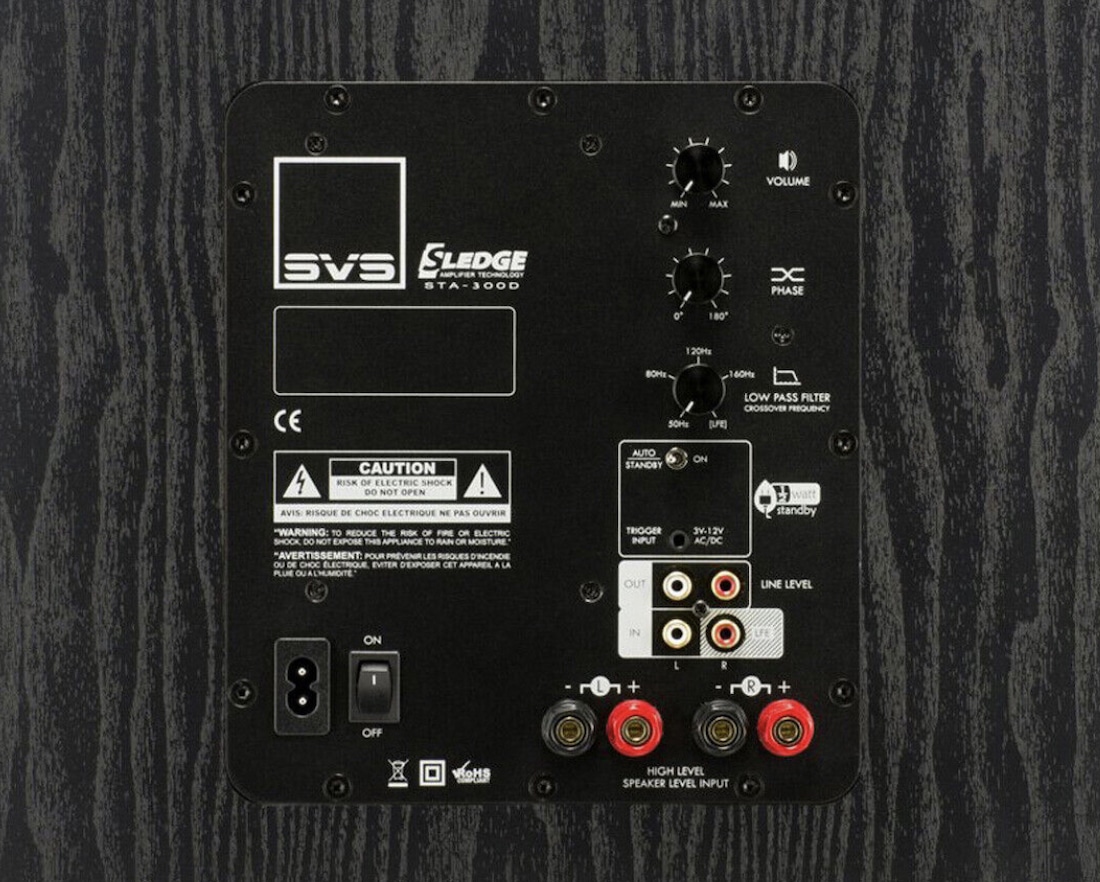Subwoofer Crossover 80hz or 120hz: Ultimate Guide
A subwoofer crossover is a crucial piece of equipment for creating the perfect audio experience. Essentially, it is a frequency range that helps to separate the high and low frequencies of an audio signal.
A subs crossover allows only the desired sound waves to be sent to a subwoofer, letting it focus on producing the best deep bass sound possible. The most common crossover points for subwoofers are 80 Hz and 120Hz. While both are excellent choices, each frequency offers its own unique benefits.
The user can choose to either limit the bass tones to 80hz, which results in a tighter, punchier bass, or raise it to 120hz for a more rounded, fuller bass sub-level. This feature is especially helpful for users who want to customize their sound to their own personal preferences.
Using the subwoofer’s crossover, you can make sure that certain sounds are highlighted while others are deemphasized. With the subwoofer crossover 80hz or 120hz frequencies feature, you can tailor your sound to your own needs for an optimal listening experience.
How Does Crossover Frequency Work
Crossover frequencies are a key concept in audio engineering and are essential in achieving a deep bass. Put simply, the crossover frequency is the point where one speaker stops and the next speaker begins. This allows each speaker to play only the sub bass that it was designed to play, allowing all of the audio components to work together to create a perfect blend.
At its most basic level, the best crossover frequency works by dividing the frequency response into distinct bands. For example, bass sub tones will be separated from mid-range frequencies.
This allows the listener to achieve a more balanced sound, as the subwoofer bass won’t overpower the other speakers. By manipulating the crossover frequency, audio engineers can adjust the sound to create the desired effect.
Adjusting Crossover to 80 Hz or 120 Hz: Bass Management 101
Generally speaking, these preferences should usually be left unchanged. To change the crossover setup in a two-channel or multichannel system, you can use either an AV processor, preamplifier, or digital signal processor (DSP) subwoofer.
80Hz crossover

The typical “Low pass 80Hz ” setup will re-direct all of the frequencies that are located under 80Hz to the woofers. It gives you a large center and a better sub surround. Most of these sound waves cannot be picked up by your ear.
The other small speakers or front speakers would not receive any sound that is located in the range below 80Hz, allowing them to focus their energy on providing clear and detailed mid-range and high outputs.
120Hz crossover

The 120 Hz setup found in most home theater systems is a variation of the typical 80 Hz low pass filter, as it provides additional protection from low frequency sounds. If you do not hear enough bass from your new sub, all you have to do is to switch to the 80hz crossover.
Anything with an LFE track will still send sound waves up to and including 120 Hz to the single sub, even with the crossover set to 80 Hz, so this can be a problem typically found in crossovers.
Tips for Proper Crossover Frequency
If you want to get the most out of your stereo setup, you need to make sure you are setting the subwoofer crossover correctly. The subwoofer crossover is the point at which the low and high bass notes of the audio signal are split and sent to different output channels.
Getting the subwoofer crossover wrong can lead to an unbalanced sound and a suboptimal listening experience. Here are some tips to help you get the most out of your crossover settings.
Consider The Ranges of The Subwoofer
When selecting an appropriate crossover setting frequency for your loudspeaker system, it is important to consider the size of the subwoofer. This means taking into account the lowest frequency the speakers can reproduce as well as the highest frequency.
It’s best to err on the side of caution and select a subwoofer crossover that is lower than the lowest frequency of the loudspeaker, as this will ensure that all sounds get sent to the speaker crossover, and none of them gets lost in the crossover.
Likewise, be sure to select a frequency that is higher than the highest frequency of the loudspeaker so that the loudspeaker is not asked to reproduce surround sounds that are beyond its range.
Use A Test Tone Check The 80Hz Crossover Is At The Correct Level
Using a test tool is a great way to ensure that the sub’s crossover frequency of your sub is set correctly. This tip can help you achieve the best possible sound quality and maximize the potential of your sound system and track your thread starter start date.
When setting the crossover frequency of your subwoofer, it’s important to make sure that you don’t go above the recommended level. Using a test tool allows you to determine whether or not the crossover frequency has been set properly and accurately.
To achieve the best results, you should start off with the lowest frequency setting and slowly increase it until you hear a clear, strong tone. Once you’ve found the correct level, you can be sure that your sub is set up properly and that you’re getting the best possible sound quality.
Use Filters with A Steep Slope to Avoid Frequency Overlap
To achieve the best results when using crossovers, it’s important to choose a filter with a steep slope to help avoid frequency overlap. This can help ensure that the signals of the different speakers you’re using are properly balanced and that the sound isn’t muddled and cuts down on standing waves.
A steep slope filter, such as a Linkwitz-Riley or Butterworth filter, can help you achieve the cleanest smooth transition and most efficient sound.
Avoid Using too High a Crossover Frequency to Avoid Distortion
Using too high a crossover frequency can have a huge impact on the sound of your subwoofer. It can cause distortion, muffled sound, and even damage to your speakers. The crossover frequency is the one at which the signal is split between the low driver and the high driver.
A good crossover frequency should be set at a point where the low frequency driver can still produce a clear, clean sound and the high driver can handle higher sound outputs without distortion.
Verify the Crossover Frequency with A Spectrum Analyzer
A spectrum analyzer is a great tool for determining the crossover frequency because it allows you to see the power of each frequency in the full range. This makes it easy to pinpoint the exact frequency of room response that you need for the crossover.
To properly verify the crossover frequency with a spectrum analyzer, you should look for the frequency that is the loudest in the range without any bass bump, and that is the one you should use for the crossover.
Which is Good For the Subwoofer 80hz or 120hz?
When it comes to choosing a subwoofer, the decision comes down to personal preference. However, it is important to understand the difference between 80 Hz and 120 Hz mid bass frequencies to make an informed decision. Generally, a subwoofer with 80 Hz is good for sound effects. This lower frequency allows for a deeper sound that offers more definition and clarity to the audiophiles
On the other hand, a subwoofer with 120 Hz is ideal for movies and gaming as it is able to reach higher frequencies and produce more powerful bass. This higher frequency allows for a more immersive experience and allows you to feel the bass more. Ultimately, depending on what type of sound you’re looking for, 80 Hz or 120 Hz will both provide great quality lows that will deliver a powerful sonic experience.
Identifying the Best Crossover Point for Your System

Finding the optimal points for your system can seem like a daunting task, but it doesn’t have to be. With a few simple steps, you can identify the perfect crossover setting for your subwoofer and enjoy the best possible performance.
The first step is to determine what type of crossover point you need. This will depend on the size and type of system you are working with. For smaller systems, you will likely want to opt for a higher point, which will provide more precise sound reproduction. For larger systems, a lower point will make sure that each speaker is given enough power to perform at its best.
Once you’ve decided on the ideal crossover setting for your subwoofer, it’s time to get to work. Finding the optimal crossover points can help you achieve maximum performance from your audio system, so it’s worth putting in the effort. You’ll want to consider a few key factors when setting up your crossovers, such as the power of your speakers, LFE channel, and amplifier, as well as the frequency response of the different speakers you’re using.
Additionally, you should consider any acoustic treatments you may have installed in the room, as they will affect the sound of your system. Once you’ve taken all of these factors into account, you’ll be able to determine the best crossover setting for your system that will provide the best sound quality while still protecting your main speakers.
Characteristics of Subwoofers for Mid Bass
Subwoofers are an essential part of any sound system and offer a variety of benefits. They are known for their power and punch, providing an impressive low-end response. Here are some of the key characteristics of subwoofers:
- Designed to reproduce sounds within the range of 40-200 Hz. Generally speaking, this particular one is lower than most speaker drivers, and therefore these subwoofers are capable of producing deep and boomy bass.
- Compact in size, making them ideal for smaller spaces where you don’t have room for a large, bulky subwoofer.
- Great for a track that requires a more balanced sound. Their ability to reproduce midrange frequencies helps to create a more realistic soundscape and full-range speakers.
- Known for their high power handling capabilities, which allow them to reproduce sound with great accuracy and detail. This makes them the ideal choice for reproducing midrange frequencies.
Frequently Ask Question
What Happens When the Crossover Frequency is Too Low?
When the crossover frequency is too low, the sound quality of a speaker system can be compromised. This can result in a muddied mix, where bass and treble outputs are indistinguishable, and as a result, the sound can be poor.
Additionally, suppose the crossover frequency is too low. In that case, the speaker system will struggle to produce sound cleanly, as the speaker cone will be receiving signals that it is not designed to handle. This can result in distortion and a harsh, unpleasant sound.
How Can I Adjust the Crossover Frequency?
Start by hooking up a frequency analyzer to your audio system, then play some music. As you adjust the crossover frequency knob, you’ll notice the output changing. Listen for the in room response where you can hear the music at its best and make adjustments accordingly.
With a little bit of tinkering, you can get your system to sound perfect in no time. So don’t be afraid to experiment and find the perfect frequency crossover for your subwoofer.
Last Updated on: March 16, 2025

